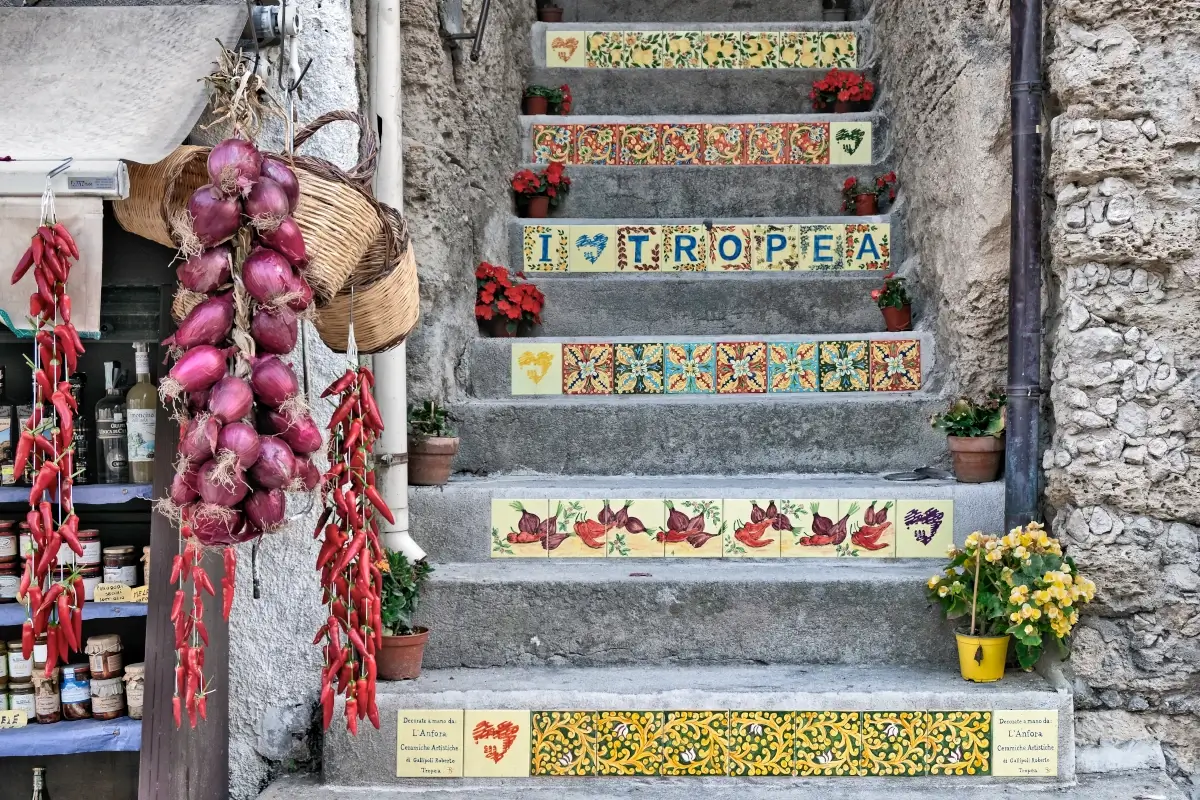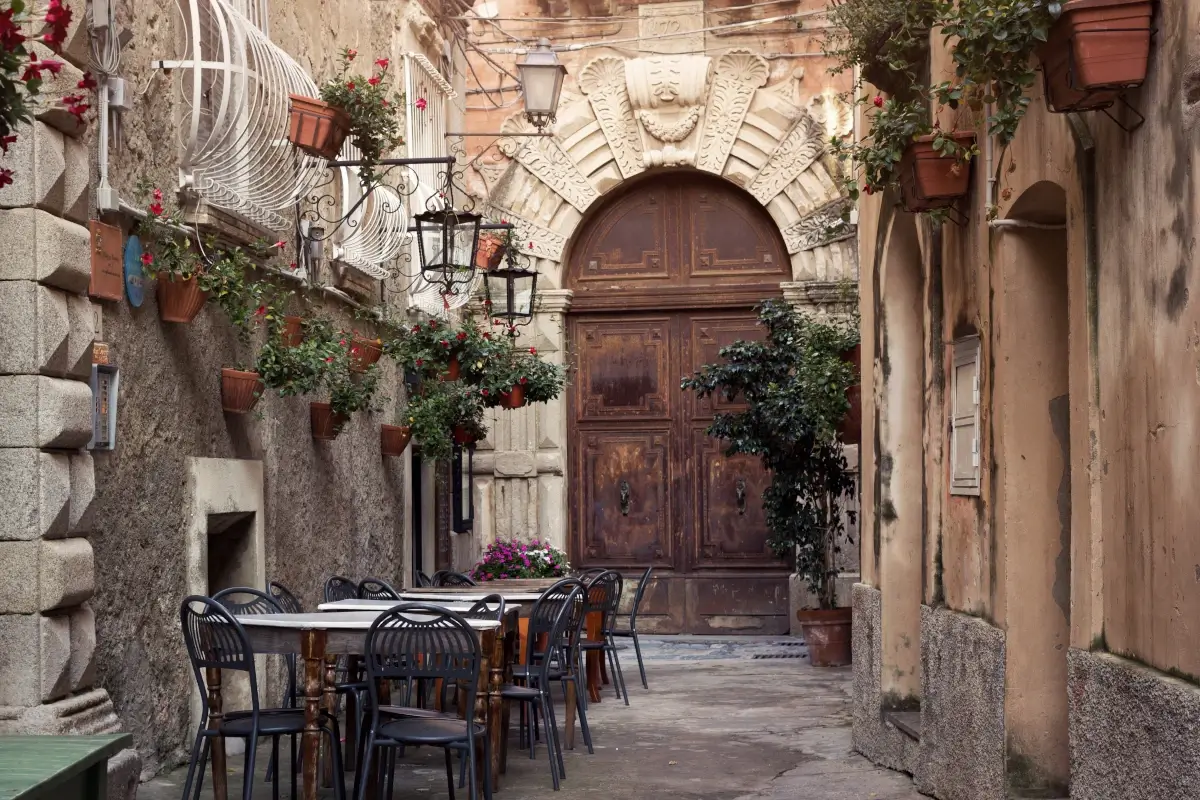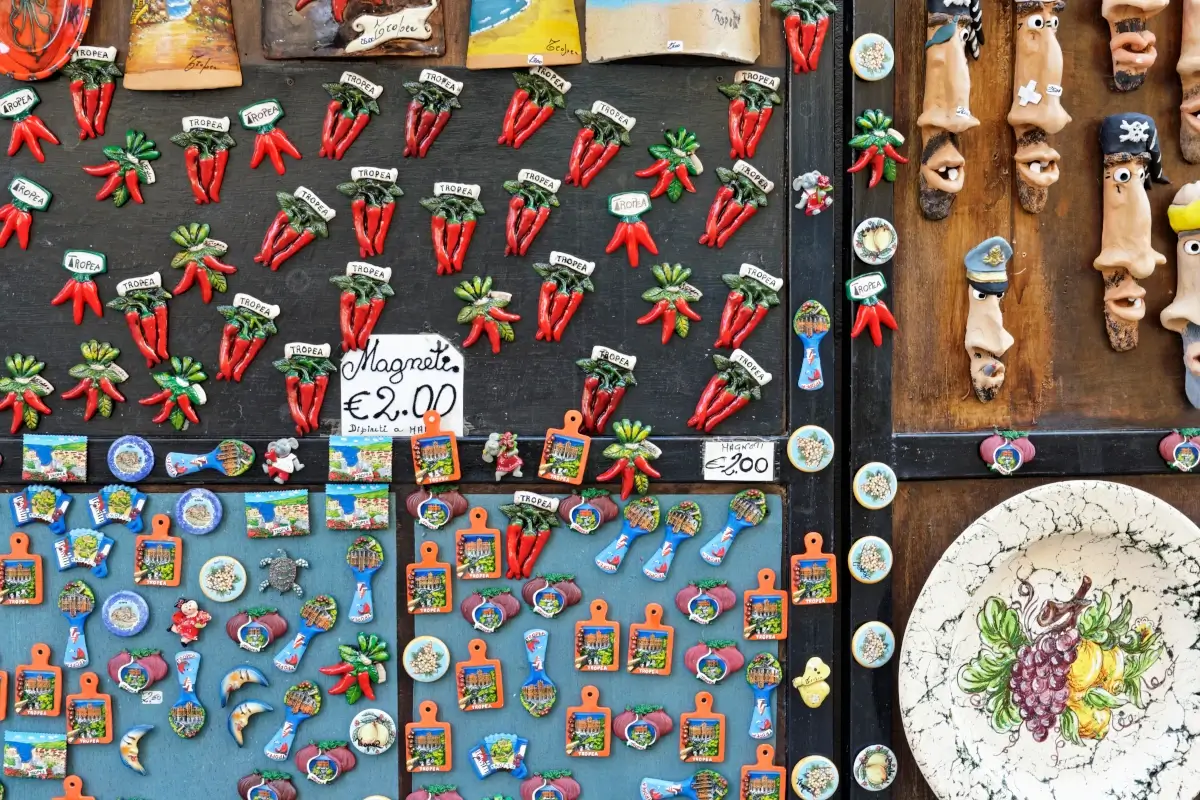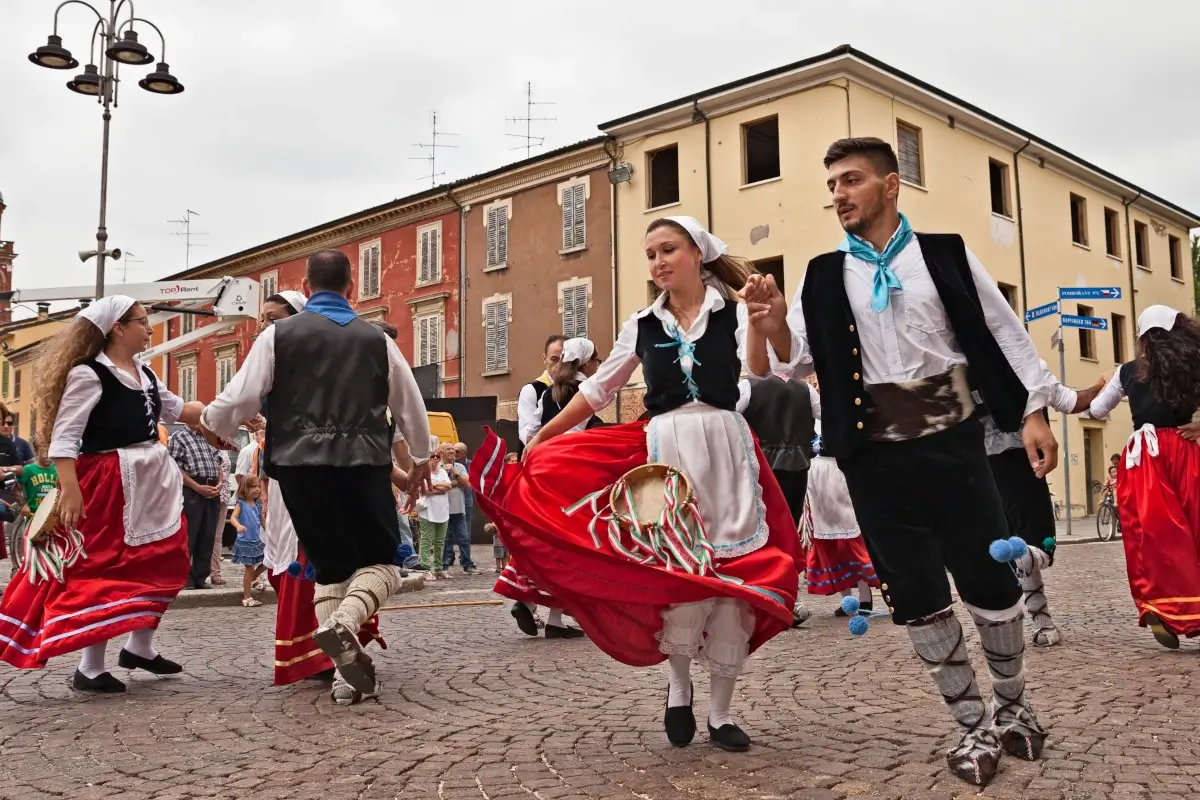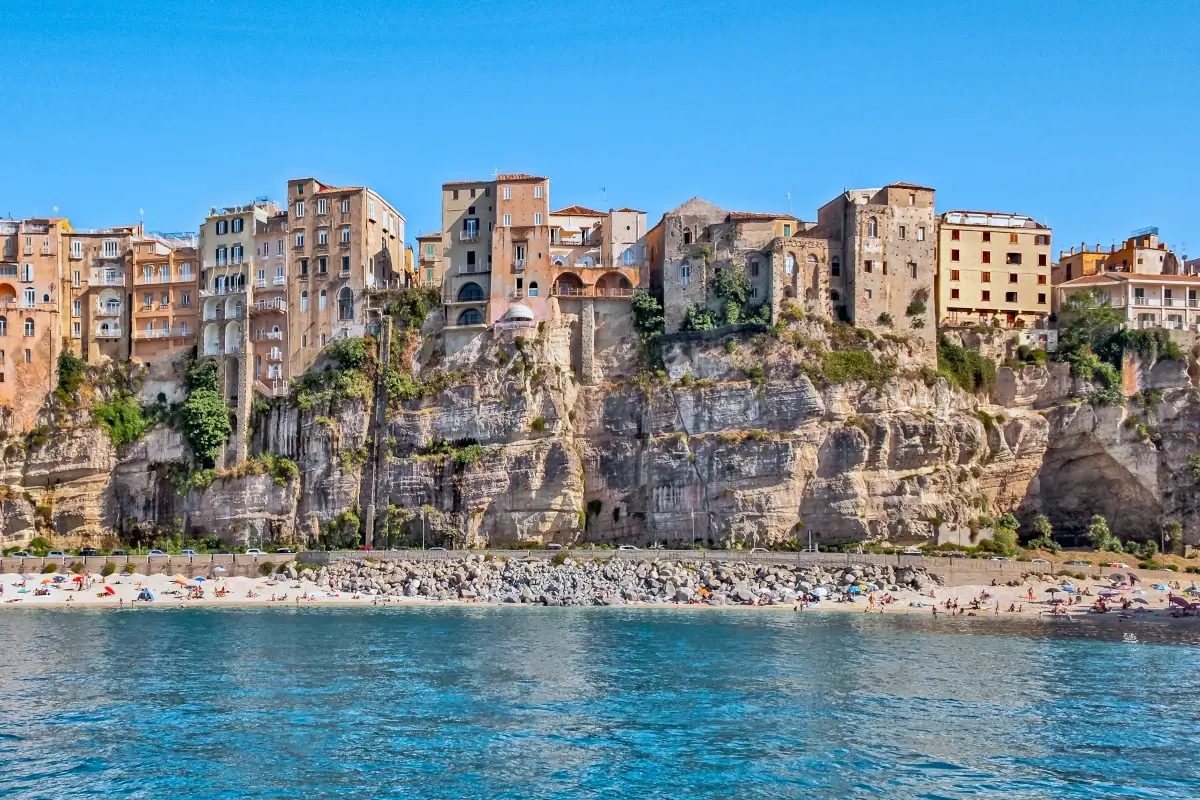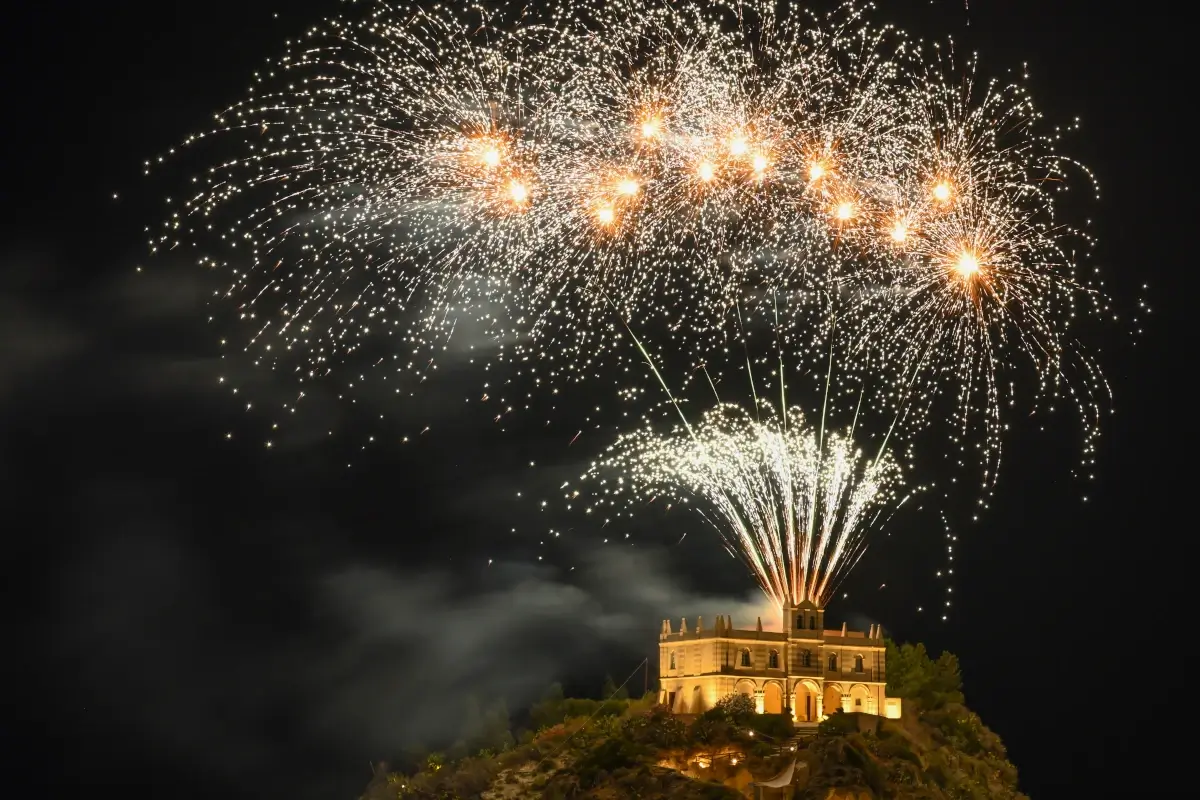The culture of Tropea is a harmonious blend of history, tradition, and the vibrant spirit of its people. Rooted in its ancient origins and shaped by centuries of Greek, Roman, and Norman influences, Tropea exudes an authentic charm that is deeply connected to its coastal surroundings. From its lively festivals celebrating local traditions to its enduring artisanal crafts and warm hospitality, the town offers visitors a glimpse into the heart of Calabria’s rich cultural heritage. In Tropea, every street, celebration, and custom tells a story of a community proud of its past while embracing the present.
ART
The artistic heritage of Tropea reflects the town’s rich history and cultural influences, offering a visual narrative that spans centuries. From sacred religious art to contemporary creations, Tropea’s art scene is a testament to the creativity and devotion of its people. Religious art plays a significant role in Tropea’s cultural identity, with many of its churches housing remarkable works. The Norman Cathedral of Tropea, for example, features intricate frescoes and sculptures that date back to the medieval era. These pieces often depict biblical scenes and saints, showcasing the skill and craftsmanship of local and regional artists. Another notable example is the Santa Maria dell’Isola, where the serene surroundings and historic architecture inspire both traditional and modern interpretations of beauty. Tropea is also home to a thriving community of artisans who continue to practice age-old crafts. From hand-painted ceramics to intricate wood carvings, these works reflect the town’s connection to its natural environment and cultural roots. Visitors can explore local workshops and galleries, where they’ll find unique pieces that capture the spirit of Tropea. In recent years, contemporary art has found a place in Tropea’s cultural landscape, with exhibitions and installations that celebrate modern creativity while paying homage to the town’s historical legacy.
ARCHITECTURE
Tropea’s architecture is a captivating blend of history and beauty, shaped by the town’s ancient roots and the diverse cultures that have influenced it over centuries. Perched dramatically on cliffs overlooking the Tyrrhenian Sea, the town’s skyline is defined by its medieval and baroque structures, which seamlessly integrate with the natural landscape. The Santa Maria dell’Isola, Tropea’s most iconic landmark, is a prime example of the town’s architectural charm. This historic monastery, perched on a rocky promontory, offers breathtaking views of the sea and surrounding coastline. Its origins date back to the Middle Ages, and its design reflects a mix of Romanesque and Gothic influences, with later restorations adding baroque elements. In the heart of the town, the Norman Cathedral of Tropea stands as a testament to the town’s medieval heritage. Constructed in the 12th century, the cathedral features a simple yet imposing façade and houses important religious artifacts, including a revered Byzantine icon of the Madonna of Romania, the town’s patroness. Tropea’s historic center is a maze of narrow streets lined with elegant palazzi, many of which were built during the Renaissance and Baroque periods. These noble residences often feature ornate balconies, intricate stonework, and colorful facades that add to the town’s charm. Walking through these streets feels like stepping back in time, as every corner reveals architectural details that tell the story of Tropea’s rich past. The town’s architecture is not only a reflection of its history but also a celebration of its connection to the sea and the surrounding landscape.
LITERATURE
The literature of Tropea is deeply intertwined with the town’s rich history, cultural heritage, and stunning natural beauty. Over the centuries, Tropea has inspired poets, writers, and storytellers who have captured its essence in their works. From ancient legends to modern narratives, the town’s literary contributions reflect its significance as a cultural and historical hub in Calabria. Tropea’s mythological ties, such as the legend of Hercules founding the town, have long been a source of inspiration for literary works. These stories, passed down through generations, form an integral part of the town’s identity and are often referenced in local folklore and writings. Additionally, the town’s dramatic cliffs, turquoise waters, and historic streets have served as a backdrop for countless tales, offering a setting that is both romantic and evocative. In more recent times, Tropea has become a muse for contemporary Italian authors who explore themes of identity, tradition, and the connection between past and present. The town’s literary scene is also enriched by regional writers who celebrate Calabria’s unique culture and way of life, often weaving Tropea’s iconic landmarks and traditions into their narratives. For visitors, Tropea offers opportunities to immerse themselves in its literary culture by exploring local bookstores, attending readings, or simply soaking in the atmosphere that has inspired so many.
CINEMA
Tropea’s cinematic charm lies in its breathtaking natural beauty and rich cultural heritage, making it a captivating setting for filmmakers and a source of inspiration for cinematic storytelling. With its dramatic cliffs, turquoise waters, and picturesque medieval streets, Tropea offers a visual feast that has attracted directors and producers seeking authentic and striking backdrops for their films. Over the years, Tropea has been featured in several Italian productions, particularly those that celebrate the essence of southern Italy. More famously in the United States, The Marvels, starring Samuel L. Jackson and Brie Larson also had multiple scenes shot along the coast. The pearl of the Tyrrenhian Sea made an iconic backdrop for the movies iconic action scenes. Its idyllic landscapes and timeless architecture have been used to evoke romance, mystery, and nostalgia, themes that resonate deeply with audiences. While not as widely known as larger film hubs, Tropea’s unique atmosphere has carved out a niche in Italian cinema, offering a quieter yet equally compelling alternative to more bustling locations. In addition to being a filming location, Tropea also celebrates cinema through local film festivals and events that showcase both Italian and international films. These gatherings provide a platform for emerging filmmakers while allowing the local community and visitors to connect through the art of storytelling on screen. The town’s intimate theaters and open-air screenings create a magical experience, blending the beauty of Tropea with the power of cinema.
MUSIC
Music is an integral part of Tropea’s cultural identity, reflecting the town’s rich traditions and the vibrant spirit of its people. Rooted in Calabria’s folkloric heritage, the music of Tropea is a celebration of life, love, and the connection between the community and its surroundings. Traditional Calabrian music, which often features instruments like the zampogna (a type of bagpipe) and tamburello (a frame drum), plays a significant role in local festivals and celebrations, filling the streets with lively and rhythmic melodies. One of the most prominent expressions of Tropea’s musical heritage is the tarantella, a traditional southern Italian dance accompanied by fast-paced, energetic music. The tarantella is a highlight of many local events, where both residents and visitors join in the spirited dance, creating an atmosphere of joy and unity. The music, characterized by its quick tempo and intricate rhythms, is often performed by local musicians who pass down their skills and knowledge through generations. In addition to its traditional roots, Tropea also embraces contemporary music, hosting concerts and performances that range from classical to modern genres. The town’s open-air venues and historic piazzas provide the perfect setting for live music, where the sounds of instruments and voices blend harmoniously with the natural beauty of the surroundings.
SCIENCE
While Tropea is best known for its stunning landscapes and rich cultural heritage, the town and its surrounding region also hold significance in the realm of science. The unique geography and biodiversity of the area have long attracted researchers and scientists, particularly those studying marine ecosystems and environmental sustainability. The Tyrrhenian Sea, which laps against Tropea’s dramatic cliffs, is home to a variety of marine species, making it a valuable site for marine biology and ecological studies. The region’s agricultural practices, especially the cultivation of the famed Cipolla Rossa di Tropea IGP, have also drawn interest from agricultural scientists. These sweet red onions are not only a culinary treasure but also a fascinating subject for research due to their unique properties, including their high antioxidant content and adaptability to the local climate. Studies on these onions have contributed to a deeper understanding of sustainable farming practices and the preservation of traditional crops. In addition to its contributions to natural sciences, Tropea has become a hub for educational initiatives and scientific discussions through local events and collaborations with universities. Workshops, seminars, and environmental awareness campaigns often focus on preserving the natural beauty and resources of the region, ensuring that science and sustainability remain integral to the town’s future. Tropea’s blend of natural wonders and cultural dedication to preservation makes it a small yet significant player in the scientific community, offering insights into the delicate balance between human activity and the environment.
